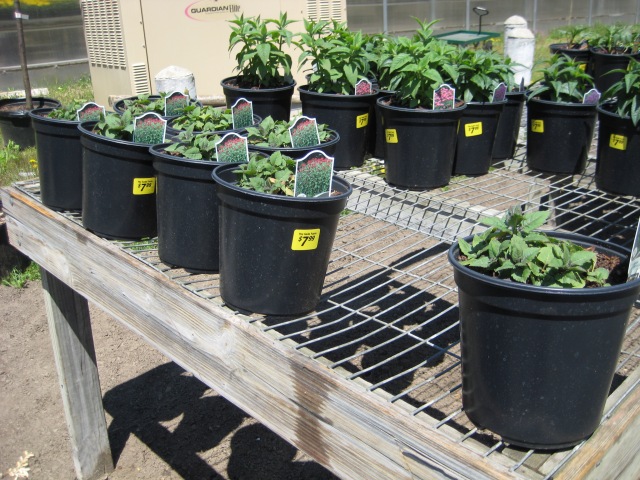I admit it. It’s an addiction. The first step is admitting it, right?
Much as I love nature and wild things, I just can’t pass up a greenhouse. 
There’s something about all those plants, spread out in a wild crazy quilt of color. The sheer gorgeousness of the exotic blooms. 
This is Gade Farm on Route 20 in Guilderland. I park the car and walk inside, vowing not to buy one more plant.
Usually, in twenty minutes I’m staggering back to my car loaded down with petunias or what-have-you.
But this year I drifted away from the magenta and purple and scarlet of the annuals, and checked out the quieter area on the side—all green, nothing blooming yet. The plants look modest, but the price tags aren’t. These little sprigs cost three times as much as petunias.
It’s bee balm, a type of mint (not much minty smell, though). A perennial, coming up year after year. That’s why it costs more, of course. It’s a bet on the future—a future filled with uncertainty, to be sure, a future of possible frost, caterpillars, or accidental beheadings with the lawnmower. But if my $7.99 gamble pays off, each year the plant will get bigger. It will (again, I’m betting) overwinter safely underground and spring forth each spring better than ever. The petunias will kick the bucket at the first frost, but the bee balm will persist.
Why bee balm, if I want a perennial? Why not peonies or roses? Well, I’m trying to garden with my neighbors in mind. Bee balm is the plant if you want to attract hummingbirds. It’s a native American plant, and hummingbirds are nuts for its long trumpet-shaped red blossoms. Good for butterflies, too. Rich in nectar. Long blooming season.
It’s a small attempt at replacing some of the native species long since ousted by the rosebushes and tulips. Bee balm is going to help me feed hummingbirds for many summers to come. I bet.





Recent Comments